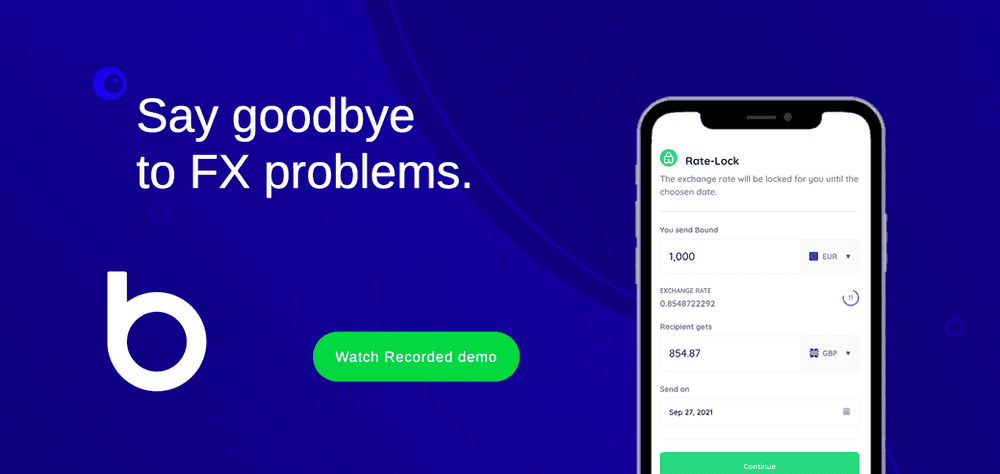Currency swaps, which are also referred to as cross-currency swaps, are agreements under which two parties with different domestic currencies agree to swap the principal amounts and interest rates of loans. Each party will take out a loan in their own currency and then swap the amount they have borrowed plus the interest that is owed for an equivalent amount in a foreign currency along with the attached interest rate for that amount.
The central idea behind a currency swap is that where the parties involved, which are usually business organisations, need to borrow funds for investment in a foreign currency, it is cheaper for them to borrow in their own currency than in a foreign currency. This is because interest payments for loans taken in foreign currencies are usually higher than they are for loans taken out in domestic currencies.
As a basic principle, if two businesses both need to borrow an equivalent amount in each other’s currencies, rather than taking out a higher interest rate loan in the foreign currency, they can each borrow money in their own currency and then swap the loans with each other.
As well as it being possible to reduce interest payments for funds borrowed, currency swaps can also be used to hedge against currency risk. Currency risk is the risk that a business will be negatively affected by a change to the exchange rate when its business is tied to a foreign currency. In the case of a loan being taken out overseas, a strengthening of the foreign currency would cause the loan to rise in price for the company which has taken it out.
An Example of a Currency Swap
The easiest way to see how currency swaps work is with an example of how a basic version of one works.
If a company from the UK was looking to borrow funds for investment in Europe in euros (EUR), domestically it may be able to borrow British pounds (GBP) at an interest rate of 5%. On the other hand, it will have to pay 8% to borrow the same amount in euros. Similarly, a company in Europe may be looking to borrow funds in British pounds in order to make a similar investment in the UK. The interest rate they are offered in EUR may be 4%, while to borrow in GBP they may be offered an interest rate of 7%.
What the companies do is enter into a currency swap. Usually, currency swaps are arranged by financial institutions like banks.
If, for example, the UK company was looking to borrow 10,000,000 EUR and the European company was looking to borrow 8,500,000 GBP, depending on the exact exchange rate this amount could be swapped directly. Rather than paying the higher rate of interest for borrowing in a foreign currency, they borrow the amount that they need to in their own currency at the cheaper domestic interest rate.
They then agree with each other to swap the principal (the amount that has been borrowed) and then to pay each other’s interest. In this case, the UK company will pay the European company’s domestic interest rate of 4% and the European company will pay the UK company’s interest rate of 5%. Each party saves 3% on interest as a result.
The parties involved agree that the currency swap will take place over a set period of time. Once this period has come to an end, the principal amounts originally borrowed are swapped back to complete the arrangement. When the principal is swapped back at the end, this can either be done at the prevailing spot rate (the current market rate at that time) or it can be done at a pre-agreed rate.
Where the principal is returned at a pre-agreed rate, this provides a form of hedging against currency risk. At a pre-agreed rate, the possibility of a change to the exchange rate causing either side to lose out is avoided. An example of a pre-agreed rate may be the original rate of exchange of the principals.
Customising Currency Swaps
While the example above gives a basic explanation of how currency swaps work, there are a number of ways in which they can be customised and different circumstances in which they can be employed.
One point is that the most common form of a currency swap is known as a mark-to-market cross-currency swap. Under this kind of currency swap, exchanges of the principal amounts borrowed take place gradually throughout the life of a contract. Rather than swapping the entire amount initially and then doing so again at the end of the agreement, exchanges take place more gradually. This is done to avoid fluctuations in the exchange rate causing one party to lose out significantly.
As well as it being possible to adjust the actual swap of the principal, it is possible to also adapt to irregular payment dates, variable interest rates, irregular dates of interest repayment or to insert mandatory break clauses, amongst other things.
Interest Rate Differences
As funds can initially be borrowed with either fixed or variable rates of interest, there are differences in the interest repayments that each party will make.
Floating vs floating swaps – these are the most common types of currency swap, where each party has obtained a loan with a floating interest rate. Each party repays the other’s floating interest rate.
Fixed vs floating swaps – In this case, as often happens, one party will approach the other with a fixed rate of interest. The party with the floating interest rate will repay the other party’s fixed interest rate and vice versa.
Fixed vs fixed swaps – This is less common, but in this case, each party will repay the other’s fixed rate of interest.
The Basis Spread
The basis spread refers to how different cross-currency swaps are priced. The basis spread is an agreed amount that is either added or taken away from one leg of the swap and is set according to the credit risk of the two parties, amongst other things.
A leg is essentially one side of the agreement and refers to the funds and interest which are swapped on one side. Each side of a currency swap has a leg consisting of a principal amount and a rate of interest.
What Currency Swaps are Used For
The main purposes of currency swaps are to provide cheaper access to borrowed funds in foreign currencies and to allow businesses that are investing in a foreign country to hedge against currency risk.
Interest Savings
As we have explained already, it is usually cheaper for a business to borrow funds from a domestic resource than it is to approach an overseas lender. In the case of our earlier example, the savings in interest payments made by entering into a currency swap could save a business a huge amount of money. While there are costs and risks associated with entering into a currency swap, the potential savings are significant.
Hedging Against Currency Risk
The other important advantage that they offer is the potential to hedge against currency risk. This is in the case that the two parties agree to repay the principal sum at a pre-agreed rate. Any changes which take place to the exchange rate between the two currencies between the time the money is first exchanged and then repaid are negated.
Currency risk is a major issue for companies that trade in foreign currencies. For companies that decide to invest large amounts of money over long periods of time in foreign currencies, there is a significant risk posed by a change to the exchange rate. A loan secured in a foreign currency, say for our example amount of 10,000,000 EUR, could turn into a very large liability if exchange rates happen to move in the wrong direction. If, for example, this was over the period of the Brexit vote, this amount would increase enormously in the company’s domestic currency.
By agreeing to repay each other at a pre-agreed rate two businesses in a currency swap will know exactly how much repayment of the amount they have borrowed in a foreign currency will cost in the future.
Where Do Currency Swaps Come From?
Currency swaps were originally invented in the 1970s as a way to get around foreign exchange controls imposed by governments. They came from the UK where UK-based companies were forced to pay a premium to borrow in US dollars. In order to get around this, UK companies began offering back-to-back loans to companies from the US. The system of back-to-back loans eventually evolved into currency swaps.
Since then, currency swaps have been used by a huge number of organisations and for a huge number of reasons. The first official currency swap was for one hundred million US dollars and took place between Mobil Oil and the General Electric Corporation. Since then, they have been used by a vast number of businesses and they have also been used by governments for various reasons. A currency swap was used by the US government, for example, during the 2008 financial crisis.

Stay up to date with insights
Enhance your finance skills by learning from our network of top industry experts






